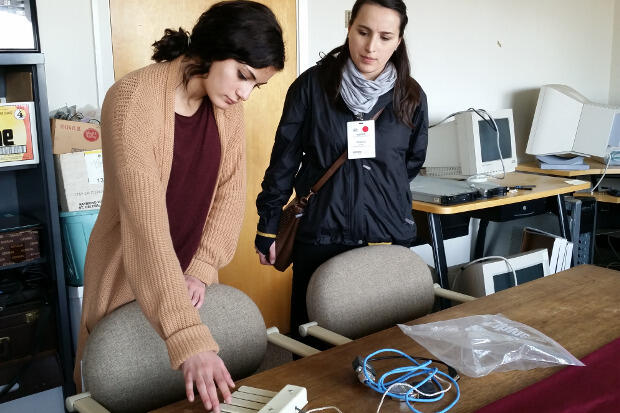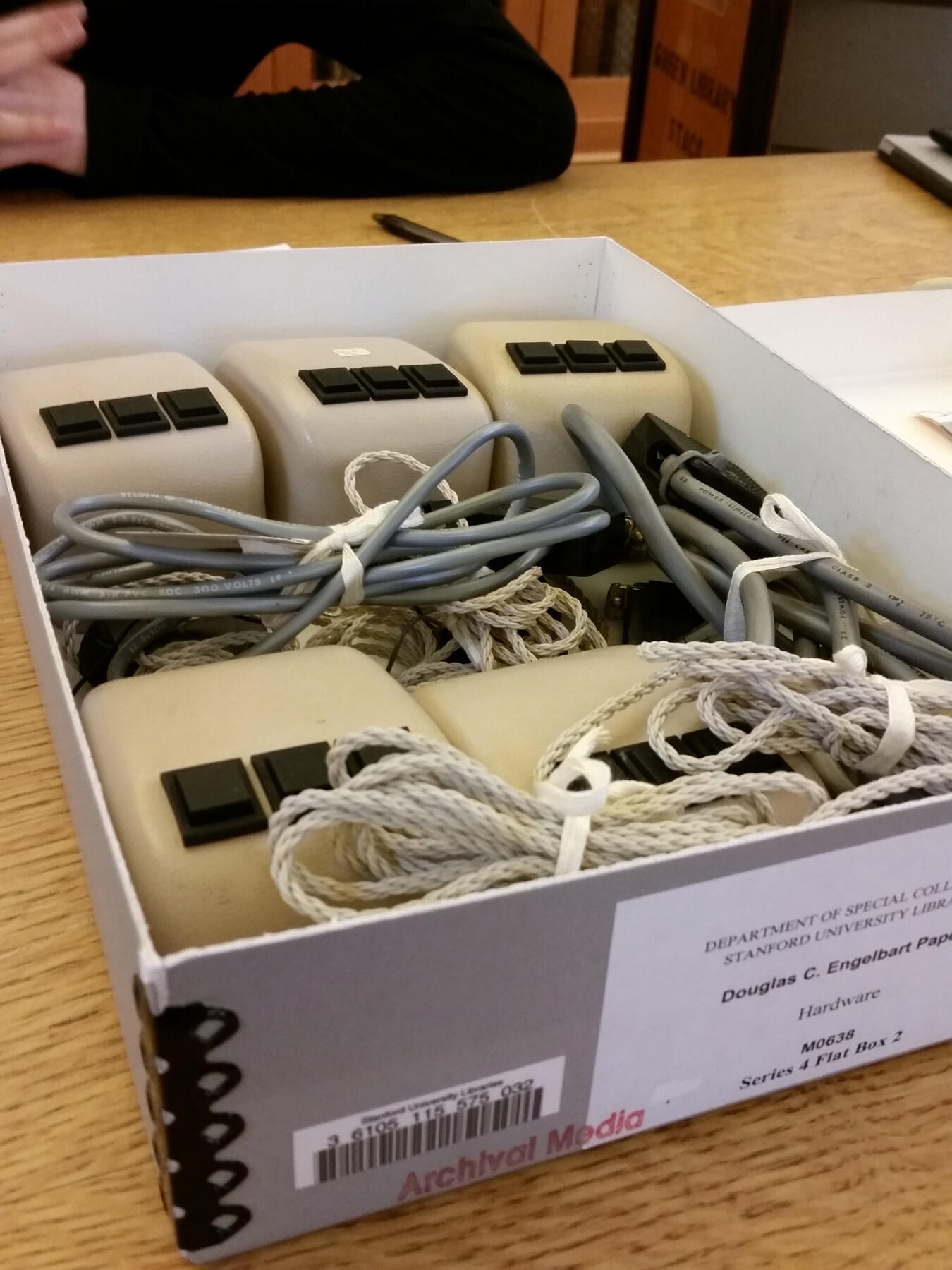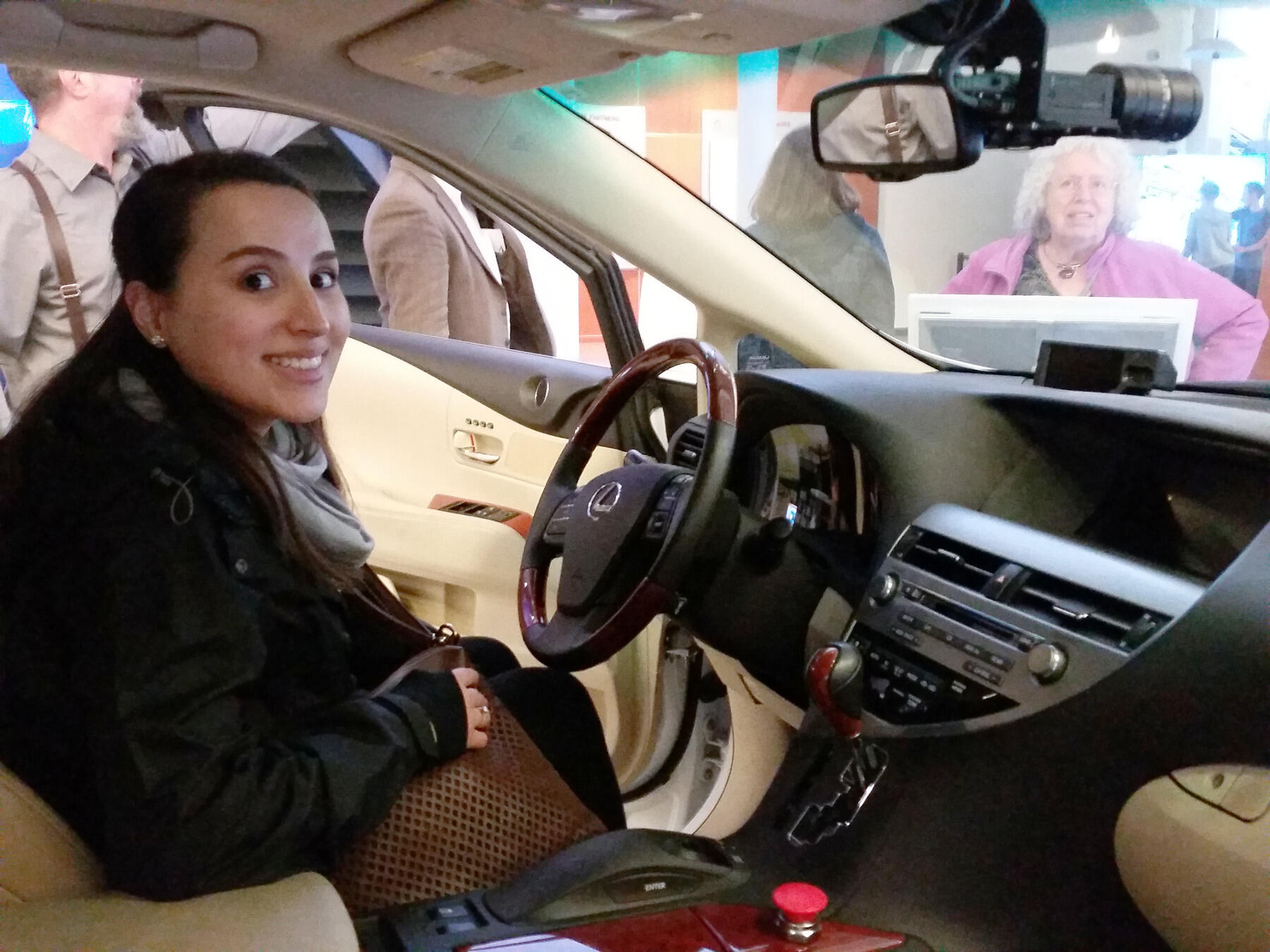
March 23, 2016
Students examine computer pioneer’s legacy during research trip to California
Share this story
Why would a future history teacher and social worker want to spend their spring break learning about early pioneers of computer technology? For Virginia Commonwealth University students Ayah Oweis and Marina Green, it was the opportunity of a lifetime.
Oweis, a sophomore studying education, and Green, a senior studying social work, are the 2015-2016 recipients of the Engelbart Scholar Award at VCU. This award covers enrollment in six special sections of UNIV 200: Inquiry and the Craft of the Argument, sections nicknamed “Thought Vectors in Concept Space.” This course in research and writing in the digital age that is the brainchild of Gardner Campbell, vice provost for learning innovation and student success and dean of the University College. The scholarship includes an all-expenses-paid spring break trip to the Doug Engelbart Institute and other academic research facilities in the San Francisco Bay Area.
“It is a huge honor being an Engelbart Scholar,” Oweis said. “Since winning the scholarship, I have learned about a whole new world I had no idea about.”
Like Engelbart, social workers are leaders who bring people together to fight for common goals.
Doug Engelbart was a pioneer of computer technology. In the 1960s he invented the computer mouse because he felt that people working on early computers needed to work more efficiently. Instead of using keyboard strokes only, Engelbart invented a device that provides quicker access to areas on a video display (also an innovation) and would therefore make solving problems with the computer exponentially faster. Engelbart died in 2013, but his legacy of solving the world’s problems survives in the people whose lives he continues to touch.
“What inspires me the most about Engelbart's career was that he had great leadership skills and knew how to bring the best out of the people who worked with him, both professionally and personally,” Green said. “Like Engelbart, social workers are leaders who bring people together to fight for common goals. I hope one day I am able to be a leader like Engelbart was.”
Traveling to California with Gardner Campbell, Shelli Fowler, Ph.D., associate dean of University College, and Alice Campbell, VCU digital outreach and special projects librarian, Oweis and Green visited the Stanford University Archives as well as SRI International (formerly the Stanford Research Institute) to dive deep into the professional and personal archives of early computer pioneers. They met with researchers who shared their experiences of working alongside Doug Engelbart, including Engelbart’s daughter Christina, who is the executive director of the Doug Engelbart Institute. According to Alice Campbell, the trip was an opportunity to delve into Doug Engelbart’s original source material, assist with the archive project and conduct a focused research project that advances the Engelbart Legacy in some meaningful way.
“I definitely learned a lot that I didn’t know before,” Oweis said. “I use a computer on a daily basis and I never thought how it was made, and it was just interesting to see how it came to be.”

This is Gardner Campbell’s second trip to California with students and he says the trip was enlightening on a personal and professional level. “I got to spend some time with Doug Engelbart's journals,” Campbell said. “They shed a lot of light on who he was as a person, some of his doubts, fears and hopes, some of his personal goals for the work that he did, in ways I don’t think the published materials expressed.”
The students also visited the Internet Archive, a digital library with a mission to provide universal access to all knowledge, and the Communications Design Group, where researcher Bret Victor, a former designer and innovator at Apple Computers, gave them a tour and talked with them about innovation and research.
“The most interesting place we visited was the Communications Design Group led by Bret Victor,” Green said. “[In] Bret's words, they do ‘magic’ with technology and Bret's goal is to revolutionize how we learn and how we think of learning today in our society.”
The spring break trip may be over but the learning and research continues back on campus.
“[Doug Engelbart's] vision was that we could solve the world’s problems if we work together, and so we need to develop tools that help us leverage our collective insight and intelligence” Alice Campbell said. “What we’re hoping to do is create a guide or a timeline of all Engelbart's archival materials, which links out to show people where materials are housed. Engelbart's idea was that we will augment human intelligence by increasing our collective IQ, and so we’re creating a tool very much in the spirit of his ideals.”
According to Green, this spring break experience was something she’ll never forget because it was a chance to understand how humans can use their collective IQ to solve the world’s problems.
“It's great that the university provides the students with opportunities like this,” Green said. “It allows us to expand our education from outside the classroom, which is invaluable for our future careers.”

Subscribe for free to the weekly VCU News email newsletter at http://newsletter.news.vcu.edu/ and receive a selection of stories, videos, photos, news clips and event listings in your inbox every Thursday.
Subscribe to VCU News
Subscribe to VCU News at newsletter.vcu.edu and receive a selection of stories, videos, photos, news clips and event listings in your inbox.












